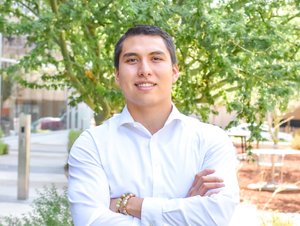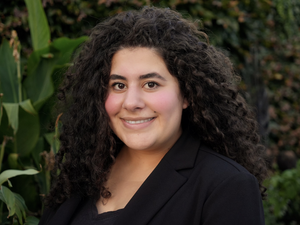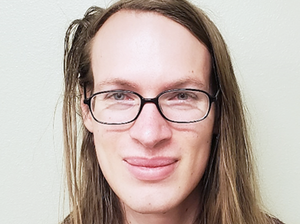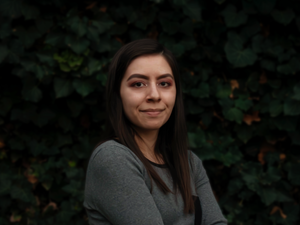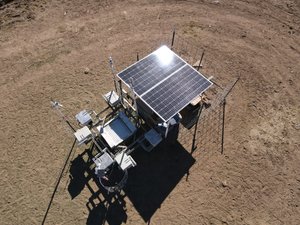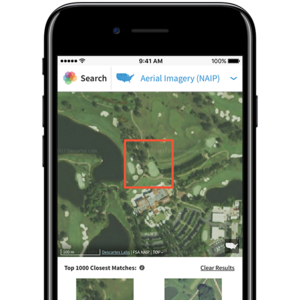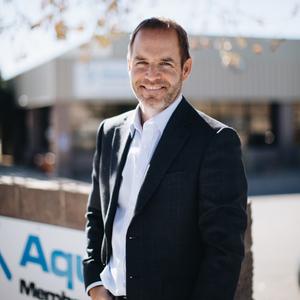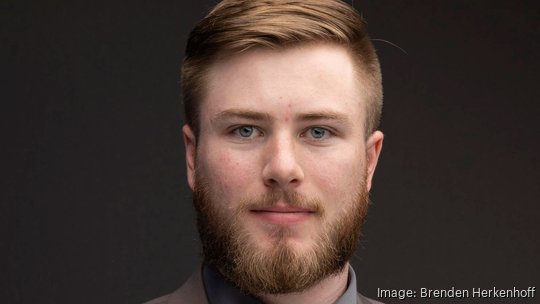
Innovation can take root anywhere, whether it's in a lab at a tier-one research university or a coworking space within a booming West Texas border city. This year's Inno Under 25 class proves that — and then some.
Each year, Albuquerque Business First and New Mexico Inno look for young startup founders, novel researchers or other folks working to advance the state's growing innovation ecosystem. Through a public call for nominations and our own individual outreach, the editorial team selected five individuals for this year's group of Inno Under 25 honorees. To qualify, those chosen had to be 25 years old or younger as of Oct. 13, 2023 (the date of this publication).
While previous iterations of our Inno Under 25 awards have picked people based primarily in and around the Albuquerque area — which is not surprising as the Duke City is by far the state's largest city — Business First looked a bit farther south for this year's class. A couple of our honorees base their work in the Borderplex region, which spans from El Paso, Texas, to Las Cruces, and another has pioneered research at the New Mexico Institute of Mining and Technology in Socorro.
But don't worry. Albuquerque — and the University of New Mexico, specifically — is still well represented.
You can read all about those five honorees in the Oct. 13 print edition of the the paper or online.
Have you ever thought about why birds are the colors they are? Well, Brenden Herkenhoff has. And the New Mexico Institute of Mining and Technology doctoral student thinks that research could help planes and other aircraft fly more efficiently.
Herkenhoff, a graduate of The ASK Academy in Rio Rancho, fell into aerospace-related research while an undergraduate at New Mexico Tech — which he called New Mexico's "best kept secret." A team he was a part of at the university created a design for a hybrid drone system that included both a fixed-wing aerial vehicle and an aquatic vehicle that could deploy into marine environments.
It was through working on that team that he met Mostafa Hassanalian, Ph.D., an associate professor of mechanical engineering who advised the team. Hassanalian's research focuses on drones and what Herkenhoff called "bioinspiration."
"Basically what it is, you look to nature because nature has the advantage of a tremendous amount of time to adapt, evolve, make things as efficient as it can in the way it knows how," Herkenhoff said. "For aerospace, we look to birds a lot. What shape are their wings? In our case what color are their wings? That's something we're very interested in."
Specifically for Herkenhoff, he said he became interested in "energy harvesting and efficiency" that can be learned from nature. Hassanalian, his advisor, had done similar research into how birds' coloration impacts their flight efficiency. Black color patterns, for instance, heat up a lot more than white color patterns.
"This increased layer of heating due to the coloration can have a significant impact on the generation of lift as well as the generation of drag," Herkenhoff said. "We've been investigating this. That's what my main area of research is."
Herkenhoff said he's named on a pending patent that, if approved, he hopes to create a business around. That patent has to do with unique color patterns that each produce unique aerodynamic effects.
The big goal, for Herkenhoff's research and his company, is to implement different design patterns to help aircraft — from large jetliners to hand-held drones — fly more efficiently. For example, he said adding a stripe of black to the edge of a plane's wings could boost efficiency by several percent. Expand that out to an entire airline industry, and Herkenhoff envisions a wider impact.
Albuquerque Business First met the New Mexico Tech student researcher to learn more about his inspiration, his innovation and his path forward.
This interview was edited for brevity and clarity.
Albuquerque Business First: How do you view the research that you're doing, through your Ph.D. program and otherwise, as innovative? Or do you view it as innovative?
Brenden Herkenhoff: I definitely view it as innovative because as far as our literature review and studies have gone, nobody else has really thought about this or looked at it. Nobody, historically, has been all that interested, from an aerodynamics perspective, [in] why birds are colored different colors, different patterns, and how that applies to larger aircraft, until my advisor looked into it. It could be very innovative for the entire aerospace industry because just by applying a coat of paint along the trailing edge, for example, we may be able to improve flight efficiency, optimistically, by 5 to 10%.
What do you think is the most significant implication of the research that you're doing? On a global scale I think applying to commercial aircraft that fly everywhere, every day, and freight aircraft, as well, is the largest impact that we could see from a fuel savings perspective just because of the sheer number of flights. On a smaller scale, I think any aircraft that flies in what we call a "lower flow regime," so slower speeds, such as drones or personal RC aircraft … stuff that's flying a lot slower has the potential to gain more efficiency improvements — 20%, potentially. That increases your flight time significantly.
Where do you go from here? What is the next step in your research path or your career path? I'll start with research. I'm continuing to work on those faster flow regimes with this coloration research. I'm setting up some experiments I can use to validate simulations. Once I have a validated simulation, I can change the wing shape, change the color pattern, and I know that it should be close to what happens in the real world. I also need to file my final patent. That research should be finished by May of next year, and that will be the end of my dissertation. So, I've got roughly eight months until I'm finished with my Ph.D. program. On the career side of things, with that research and that patent, I'm starting a company specifically to do what we've discussed — applying that to planes, other aircraft, to improve their efficiency. I'm also starting a drone delivery company, where a couple other students and I want to create a hybrid system for drone delivery that can improve efficiency. So not only could you get deliveries faster, but they use less energy.
